LOAM SANDBOX POST-LAUNCH ROADMAP

Written by Nick Foster




When you share your feedback, suggestions, and bugs with us in Discord, they’ll eventually make their way onto the board’s “Player Feedback & Suggestions” list in the form of a brand-new card. Depending on their priority, these cards will move to the “To Do” list, then to” In Progress,” before finally earning a spot on the board’s “Done” list. As we wrap things up and roll out Loam Sandbox updates, we’ll also share what has changed via our Discord’s #release-updates channel.
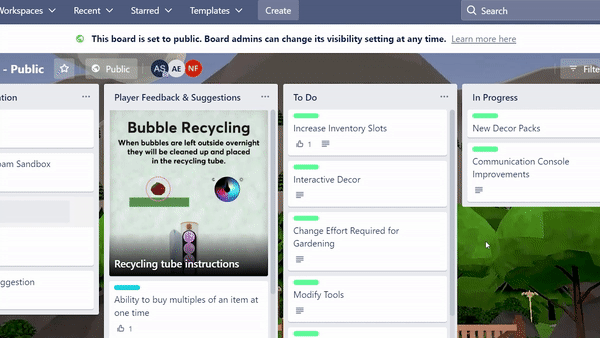
Click here to visit the Trello board and track Loam’s development in real-time.


Written by Nick Foster
FINALIZATION OPTIMIZATION: PUBLISHING QUEST VR APPS AND GAMES

Written by Nick Foster
We’re closer than ever to Loam Sandbox’s early access release via App Lab. For nearly two years, our team has been working tirelessly to bring the vision of a relaxing virtual reality garden sim game to life. Much of this time was spent designing the game, but a surprising amount went toward optimizing Loam to adhere to App Lab’s standards and requirements. Developing and optimizing a VR game has provided an invaluable opportunity for us to familiarize ourselves with the Quest Virtual Reality Check (VRC) guidelines, an official list of app requirements and recommendations set forth by Oculus (soon to be officially rebranded as Meta). Throughout this blog, we will share the tricks we’ve learned in the hopes that they will help you get your games and apps running on Oculus Quest headsets.
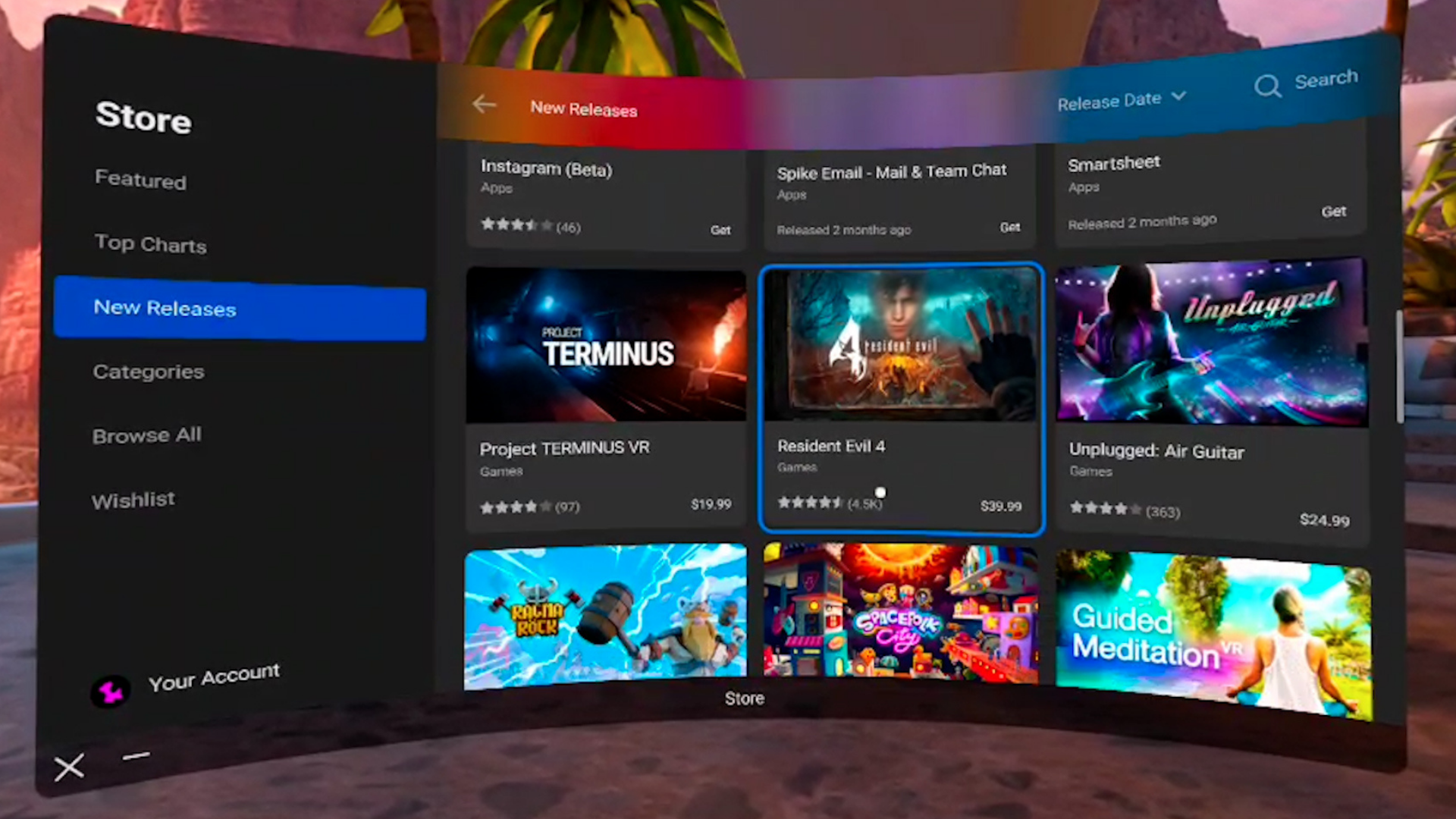

Developers should determine their app’s ideal distribution channel as early as possible.
As you prepare your work for release, the distribution channel you will use to house your game is a significant decision you’ll need to consider as early as possible. Your decision will directly determine how much time and effort you’ll need to spend optimizing your game to run in accordance with various VRCs. Developers tasked with getting their work published and accessible via Quest headsets are presented with the following three different distribution options, with each offering unique advantages and disadvantages for your apps release: the Quest Store, App Lab, and SideQuest.

The Quest Store is the only native marketplace for games and apps.
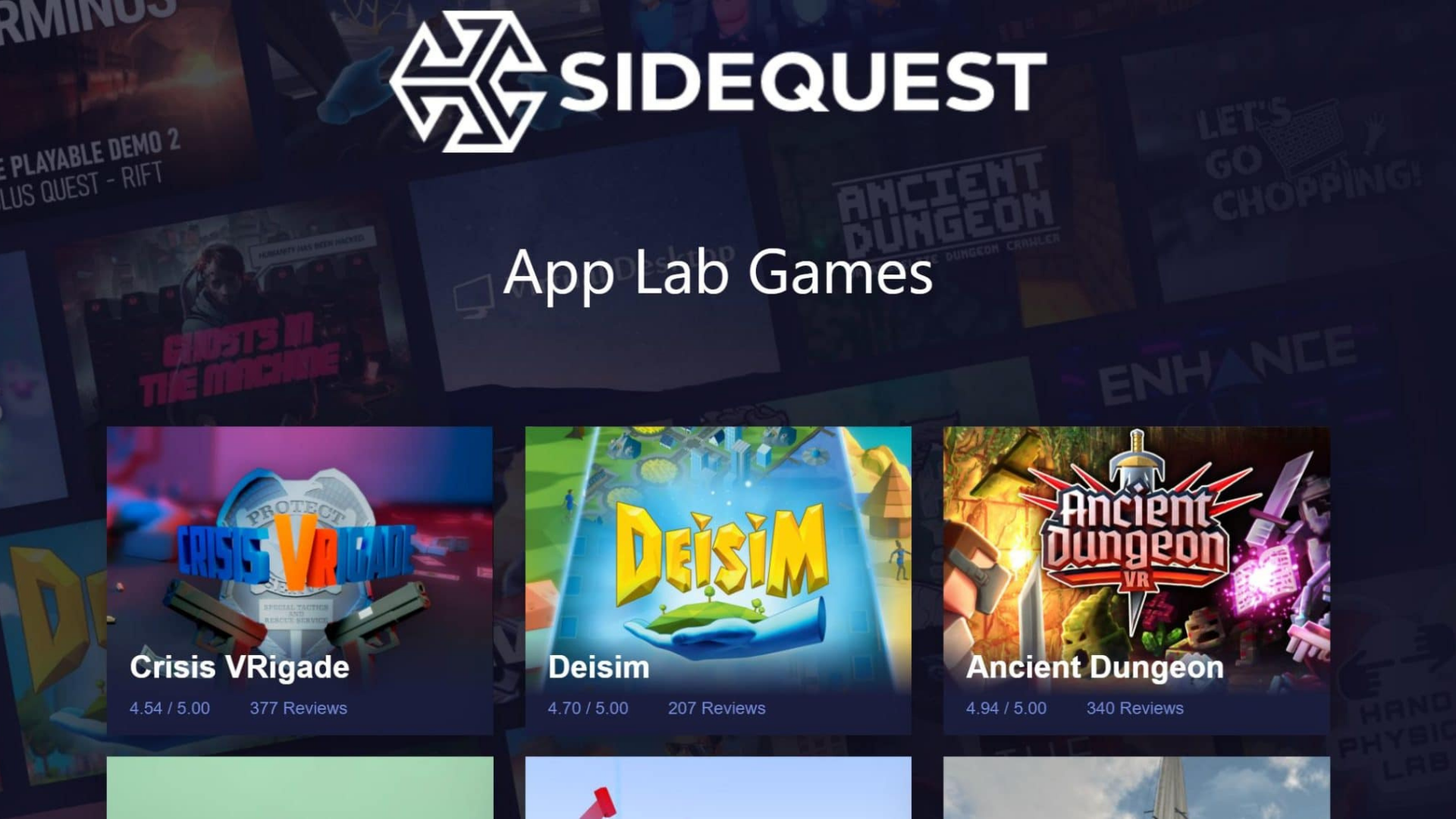
App Lab games can be found in the Quest Store and on SideQuest.
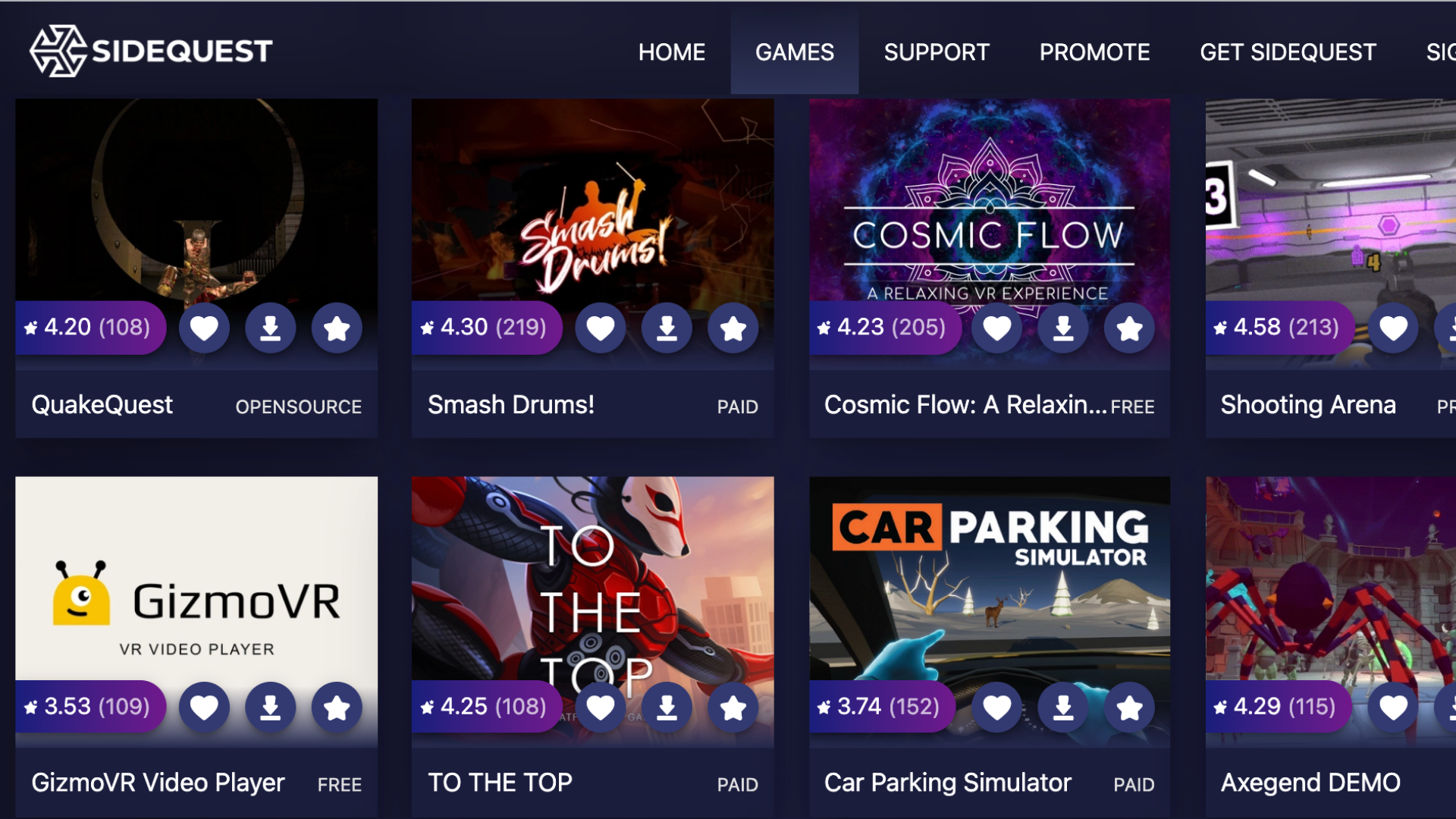
SideQuest enables users to sideload your apps to their headsets.
Please note, there are other distribution avenues for your VR games, but this blog will focus solely on platforms accessible by Oculus Quest headsets. Other platforms will offer different distribution options with different submission processes.
The Quest Store
Of the three available, the Quest Store features the most rigid and demanding set of requirements that your app must meet in order to be published. Despite that, we recommend this route for developers publishing finished games they feel confident in; the Store offers unique and valuable advantages that will help your game find greater success such as excellent accessibility, little competition, and opportunities for organic discovery. These advantages, however, come at the cost of spending a significant amount of time optimizing your game to earn Oculus’ direct approval.
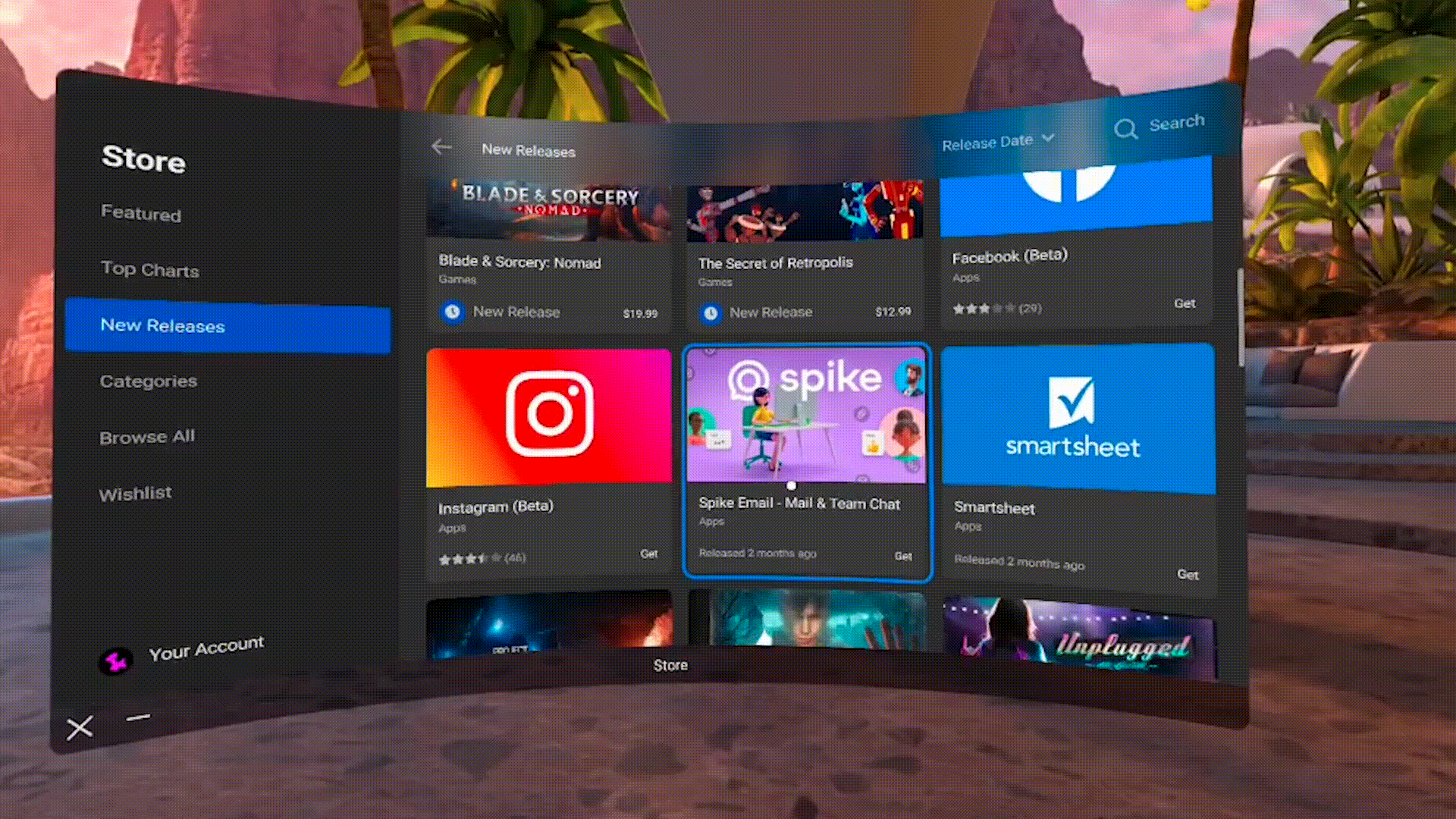
As far as app submissions are concerned, the Quest Store is characterized by its stringency. Apps distributed via the Store must comply with a whole host of requirements set forth by Oculus that ensure everything listed on the Store is of consistently high quality. Although several checks are merely recommendations, these checks span eleven different categories ranging from performance and functionality to security and accessibility.
The Quest Store’s quality-first mentality makes for a strict submission process, but it also reduces the potential competition your app will face should it earn Oculus’ approval. As of writing, there are only about 300 games listed on the Quest Store—less than half the amount available on App Lab, meaning Quest users browsing the Store are far more likely to organically find your app than users browsing App Lab’s library via SideQuest. The Quest Store is deeply integrated within Quest’s user-interface, so this channel also provides the easiest option for users looking to download and play games.
The Store reviews app submissions on a first-come, first-serve basis and has varying review times dependent upon the number of submissions at that time. A solid estimate is four to six weeks, but it’s worth noting there have been instances of developers waiting as long as three months or as little as two weeks.
App Lab
Games and apps published through App Lab are searchable in both the Quest Store and SideQuest. Think of this distribution channel as a happy medium between the Quest Store’s strict approval process and SideQuest’s comparatively lackadaisical approach to reviewing app submissions. That said, App Lab faces its own set of drawbacks; while this distribution avenue offers a more accessible means of entry, it also faces increased competition and minimal organic discovery.

App Lab titles are browsable via SideQuest, but these apps can only be found within the Quest Store by searching their full title exactly.
While App Lab submissions must abide by Oculus’ VRCs, several checks have been relegated from requirements to recommendations, making App Lab far more likely to approve your app than the Quest Store is. App Lab submissions are also reviewed on a first-come, first-serve basis and, although review times will vary, these windows are generally quicker than those of the Quest Store.
App Lab’s more straightforward approval process means that its library is growing far quicker than that of the Quest Store. With a current catalog comprising over 500 games and new ones being added every day, apps distributed via App Lab without any congruent marketing plan run the risk of sinking in this vast sea of options. Although SideQuest allows users to browse through the entire App Lab library freely, the Quest Store will only show these titles if you search their entire names precisely as listed. For example, searching Pavlov Shack through the Quest Store will not yield any results, but searching Pavlov Shack Beta will. Because so few people will naturally stumble across your App Lab game, you bear the responsibility of making sure your app gets seen.
SideQuest
SideQuest is essentially a giant, third-party store for Oculus Quest. It enables you to sideload games and apps onto your headset, provided you have access to a computer or mobile device. This distribution channel is the least accessible of the three as it also requires users to have their headsets in developer mode. However, unlike the Quest Store and App Lab, SideQuest submissions do not need to be approved by Oculus directly. Instead, these games and apps undergo a simpler, quicker administrative process that does not require your game to comply with any VRCs. SideQuest provides the quickest route for developers to share new builds with team members, playtesters, or friends.
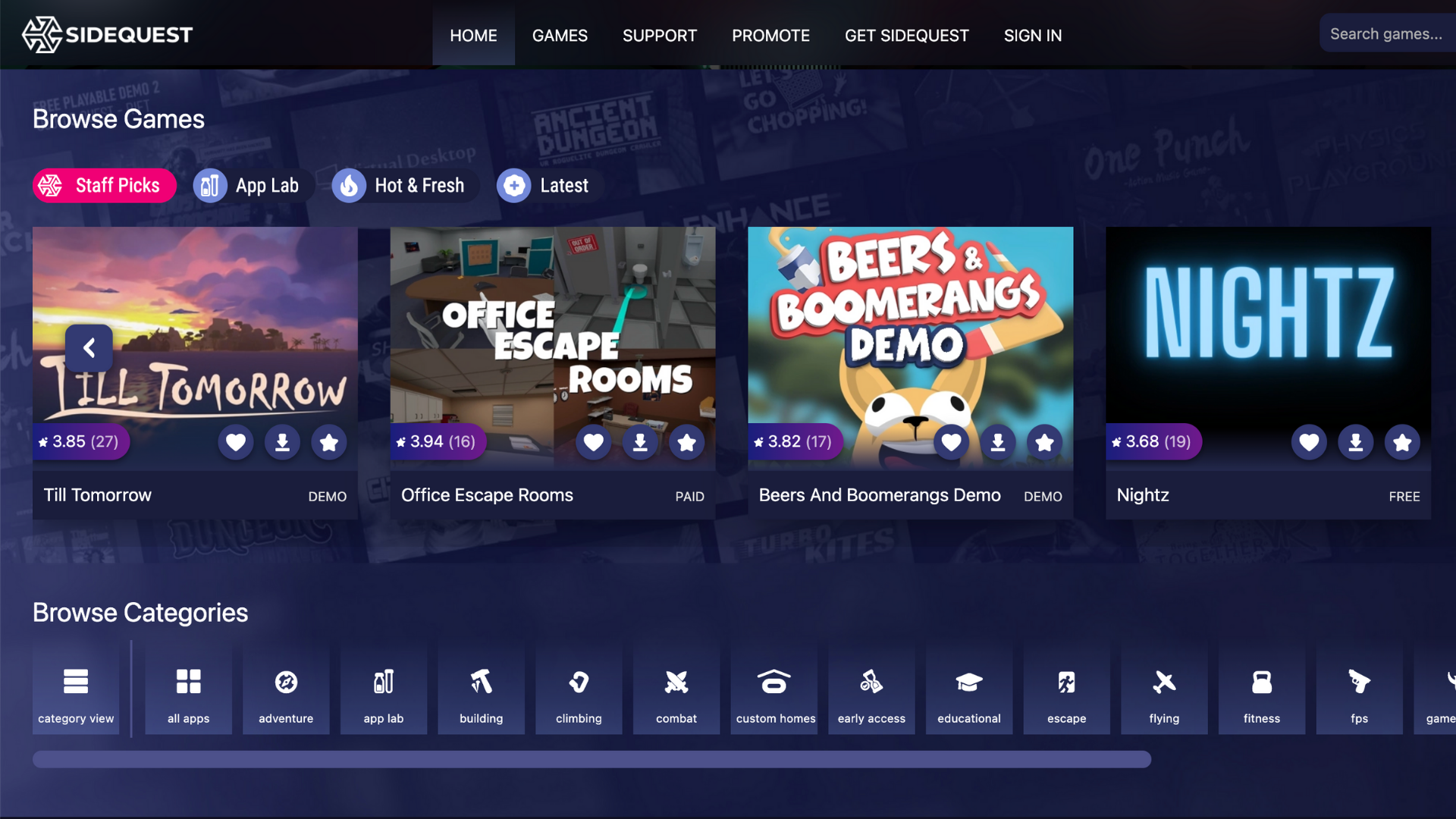
Virtual Reality Checks to Keep in Mind
Getting an app approved by Oculus is easier said than done. Therefore, developers should be mindful of key VRCs as early as possible in order to ensure that major game design decisions are made with Oculus’ high standards in mind. After having undergone much of the optimization required to ready Loam Sandbox for official release, let’s briefly explore each of the eleven categories listed within the Virtual Reality Check guideline. This high-level overview of the requirements and recommendations will only apply to prospective Quest Store and App Lab games and apps.
1. Packaging
Packaging VRCs exist to ensure that every app available in the Quest Store and App Lab adheres to Oculus’ app packaging and formatting standards. There are six different required checks within this category regardless of whether you are submitting to App Lab or the Quest Store. One requirement, VRC.Quest.Packaging.5, requires that every submission be formatted as an APK file and smaller than 1 GB in size.
For a detailed look at the requirements that your app’s APK file must conform to, visit here.
2. Audio
The only Virtual Reality Check within this category is VRC.Quest.Audio.1, an optional recommendation for your app to support 3D audio spatialization features. Though not a requirement, incorporating audio spatialization within your game will mean that your app’s audio output will change as the user’s positioning does. We recommend that you consider implementing 3D audio within your games because doing so will add an immersive gameplay element, positively impacting player experiences.
3. Performance
Performance VRCs exist to ensure that the gameplay provided by titles available for Quest is of consistently high quality. This category comprises two App Lab requirements or three Quest Store requirements that concern your app’s refresh rate, runtime, and responsiveness.
Adhering to these checks can be difficult, thankfully there are several tools, such as the Developer Hub, that will enable you to accurately track the performance and overall functionality of your Quest apps. VRC.Quest.Performance.1 requires all App Lab and Quest Store listings to run at specified refresh rate minimums of 60 Hz and 72 Hz, respectively. You’ll want to keep this VRC in the back of your mind as you develop your game because its performance will benefit greatly from finding alternatives to CPU-intensive design choices.
We suggest using transparencies sparingly; whenever we made too many of Loam’s colors or textures see-through, we would experience drastic dips in frame rate. We also noticed that rigging critter skeletons within Unity would create a similar effect. To hear art optimization insights directly from our team, visit here.
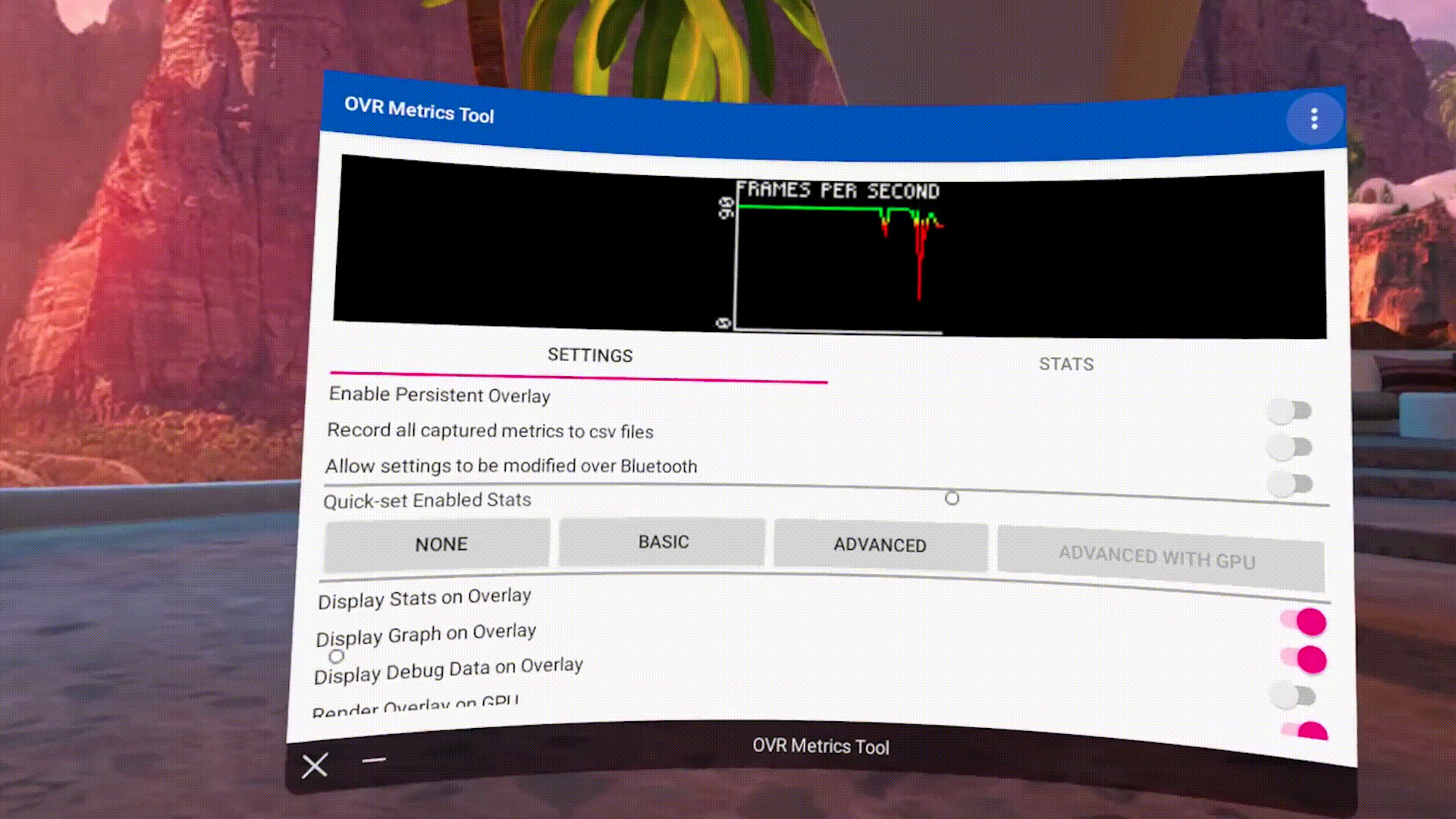
We recommend sideloading OVR Metrics onto your headset and toggling on its persistent overlay setting. This will provide a real-time display of your app’s frame rate as you test its performance.
4. Functional
Oculus has created thirteen functional VRCs to ensure that all apps listed on App Lab and Quest Store run smoothly. Together, they prevent crashes, freezes, extended unresponsive states, and other game-breaking errors. Four of these checks are recommendations for App Lab submissions, while only one check is a recommendation for the Quest Store.
Developers seeking a spot in the Quest Store should keep VRC.Quest.Functional.1 in mind as they produce their games and apps. Because it requires you to be able to play through content for at least 45 minutes without any major errors, crashes, or freezing, this check could potentially impact your game’s design. VRC.Quest.Functional.1 is merely a recommendation for App Lab submissions, making that that ideal distribution avenue for early access games and demos not yet long enough for the Quest Store.
Visit here for a complete list of functional VRCs.
5. Security
Two security VRCs ensure that every Quest app respects and protects the privacy and integrity of customer data. Made up of one recommendation and a requirement, this is among the more straightforward categories. VRC.Quest.Security.2 is the only security check that developers must abide by; it requires your app to request no more than the minimum number of permissions needed for it properly function.
For more details, visit here.
6. Tracking
The tracking category of VRCs consists of one mandatory check for both Quest Store and App Lab submissions. To comply with VRC.Quest.Tracking.1, your app’s metadata must meet Oculus’ requirements for sitting, standing, and roomscale play modes. You can take in-depth look at this Virtual Reality Check here.
7. Input
Seven input VRCs relate to your app’s controls scheme and commands. This category is comprised of four and five requirements for App Lab and Quest Store, respectively; they function to maintain consistent interactivity from one Quest app to the next. For example, VRC.Quest.Input.4 makes sure that, when the user pulls up Quest’s Universal Menu, every Quest app continues to render in the background but hides the user’s hands.
If you plan on implementing hand tracking within your app, you’ll need to pay particular attention to this category. View all seven VRCs within the input category here.
8. Assets
Each of the eight VRCs included within this category is required of Quest Store submissions, but only half are needed for App Lab titles. These checks refer to the assets that will accompany your game within each distribution channel, ensuring that your app’s logos, screenshots, description, and trailer meet Oculus’ expectations. Though you may not be required to abide by every check if you’re looking to submit to App Lab, it’s important that you consider every check as you plan and create the marketing materials that will help your game stand out.
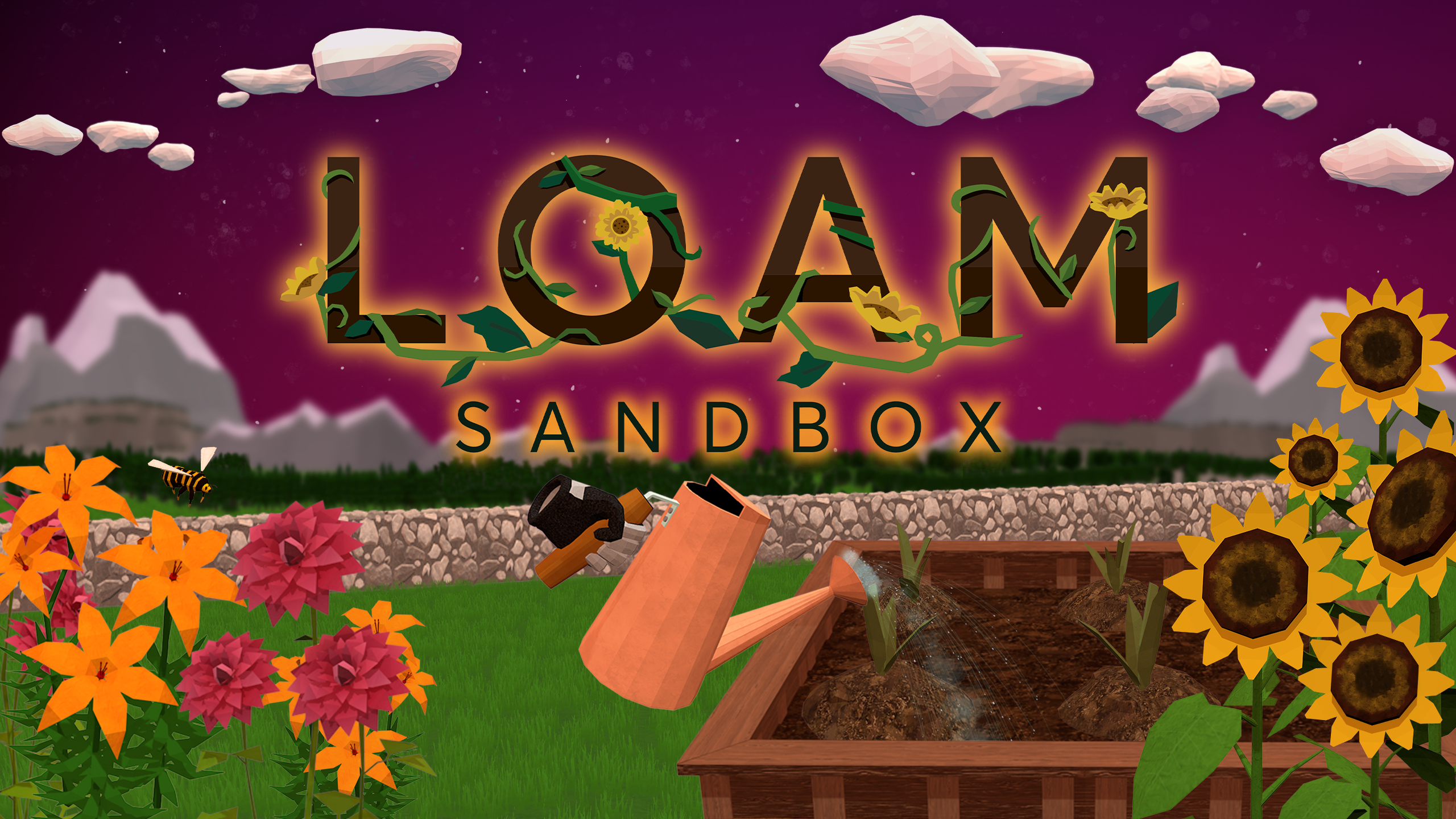
Clear cover art, for example, is only a requirement for the Quest Store, but this is an asset that will undoubtedly help your game stand out on App Lab too. Keep in mind that you will need multiple cover art images of different sizes and dimensions in order for your graphics to look their best in different areas of these distribution platforms.
As you plan your game’s trailer, you should keep VRC.Quest.Asset.7 in mind—a required check limiting your trailer’s length to two minutes or less. While recording, take advantage of SideQuest’s ability to run ADB commands on your headset and alter the dimensions and bitrate settings of your Quest’s native screen-record feature. Also remember that, due to VRC.Quest.Asset.6, no asset accompanying your game can feature another VR platform’s headset or controllers.
9. Accessibility
Although none of these checks are requirements for either distribution channel, the accessibility category spans nine recommendations, making it among the largest sections in throughout the Quest Virtual Reality Check guideline. Failing to incorporate any of these suggestions won’t invalidate your submission, but we recommend developers implement these checks as well because they make sure that your game accommodates a variety of users.
Making adding subtitles, making text clear and legible, and incorporating color blindness options within your app’s settings are invaluable ways of making sure that it is accessible to the broadest audience possible. For ever suggestion within this category, visit here.
10. Streaming
Streaming VRCs exist to guarantee all Quest apps are capable of providing smooth streaming experiences. VRC.Quest.Streaming.2 is the only required streaming check, making streaming among the simpler categories to comply with. You’ll just need to make sure that your app can only stream VR content to local PCs that the user has physical access to.
11. Privacy
Five required privacy checks ensure that all games comply with Oculus’ Privacy Policy requirements. Your app’s Privacy Policy must clearly explain what data is being collected, what it is being used for, and how users may request that their stored data be deleted. All five checks included within this category are requirements for titles on either the Quest Store or App Lab.
Click here for more information regarding Oculus’ Privacy Policy Requirements.
Have you submitted an app through the Quest Store, App Lab, or SideQuest? Are you planning to do so? Let us know what your submission process was like by leaving a comment below or tagging us on Twitter: @AmebousLabs

Written by Nick Foster
KICKSTART YOUR CAREER IN GAME DEVELOPMENT

Written by Nick Foster
Let’s face it, we all want to make games. Game development offers a uniquely rewarding career that allows you to celebrate your work in unusual ways. In what other industry are you afforded the luxury of being able to literally play with your work? Luckily, every great game needs a team behind it—people who can design gameplay, implement sounds, write code, create assets, and playtest each build. Because game production blends technical abilities and logic with artistic expression and creativity, there’s a role for everyone regardless of your skillset or interests. Take our team, for example:
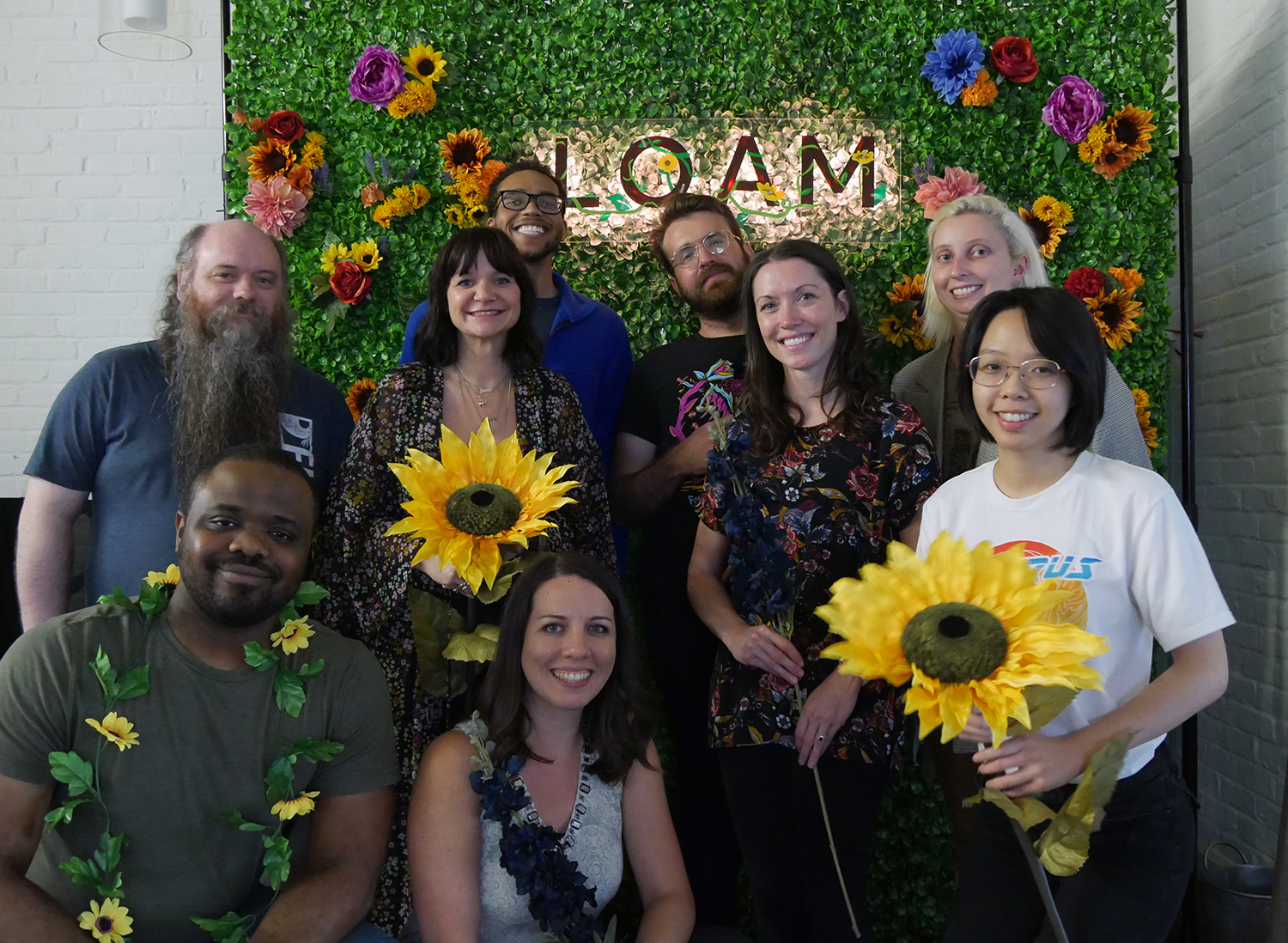
With so many accessible, often free online resources at your disposal, there’s never been a better time to enter the gaming industry. However, just like any other significant undertaking, figuring out where to begin is the hardest part. Whether you want to make game development your new career or your next hobby, our team of developers and artists will share within this article their go-to tools and resources, plus their suggestions for professionals looking to break into the industry.

With so many resources at your disposal, there’s never been a better time to enter the gaming industry.
Our team’s best advice for an aspiring game artist or developer would be to start small and think big. If you’re interested in forging a career in game development, then you should be prepared to spend time developing your abilities and familiarizing yourself with the software and languages you anticipate using the most. With that said, the best place for you to start your journey might actually be away from the computer.
You can’t start designing games until you start thinking like a game designer! Creating your own board game is an incredibly effective introduction to the world of game production. When you look at the steps involved, producing a board game is surprisingly similar to video game production. Regardless of their medium, every game needs a working set of rules designed with players in mind, then they eventually need playtesters to highlight potential improvements for the next iteration or build.
At the moment, many aspiring 3D artists and developers are denied the hardware needed to develop satisfying video games simply because it is too expensive to acquire. This is another reason board games are a great place to start, but if you’re truly ready to take the next step, we suggest taking advantage of the local opportunities unique to your area. By participating in meetup groups and organizations like the International Game Developer’s Association (IDGA), you may find regular access to the expensive hardware you’re seeking.
To craft the magical world of Loam, our team uses the game engine Unity, which you can download and start learning for free. As you familiarize yourself with Unity (or your engine of choice) and start producing your game, you will inevitably encounter obstacles. Bringing questions to your local meetup group is a great way to gain new insights, but this is not always possible. Thankfully, there are a plethora of free and accessible resources online!
Meeting others with similar interests, skills, and goals is perhaps the most exciting aspect of pursuing any passion. While attending college facilitates limitless networking opportunities, it is not the only path for aspiring developers or artists. Above all else (including degrees), you should value your portfolio, your previous work experience, and your connections in the industry. With so many possible ways to enter the industry, here is how our team managed to do so:
Aspiring game artists and developers should be prepared to spend lots of time refining their trade. Again, start small and think big; with consistent practice, you’ll start to master your software, understand programming languages, improve your artistic vision, and perfect your creative abilities.

Written by Nick Foster
PRE-PRODUCTION: WHY IT’S UNDERRATED

Written by Amy Stout
There is much more to game development than meets the eye. Even simple games with straightforward concepts underwent massive amounts of research, ideation, theorizing, testing, prototyping, iterating, and programming before eventually becoming what you recognize them as today. Looking back at what we’ve done thus far in developing Loam, there is one noticeably underrated step of game development that stands out: pre-production.
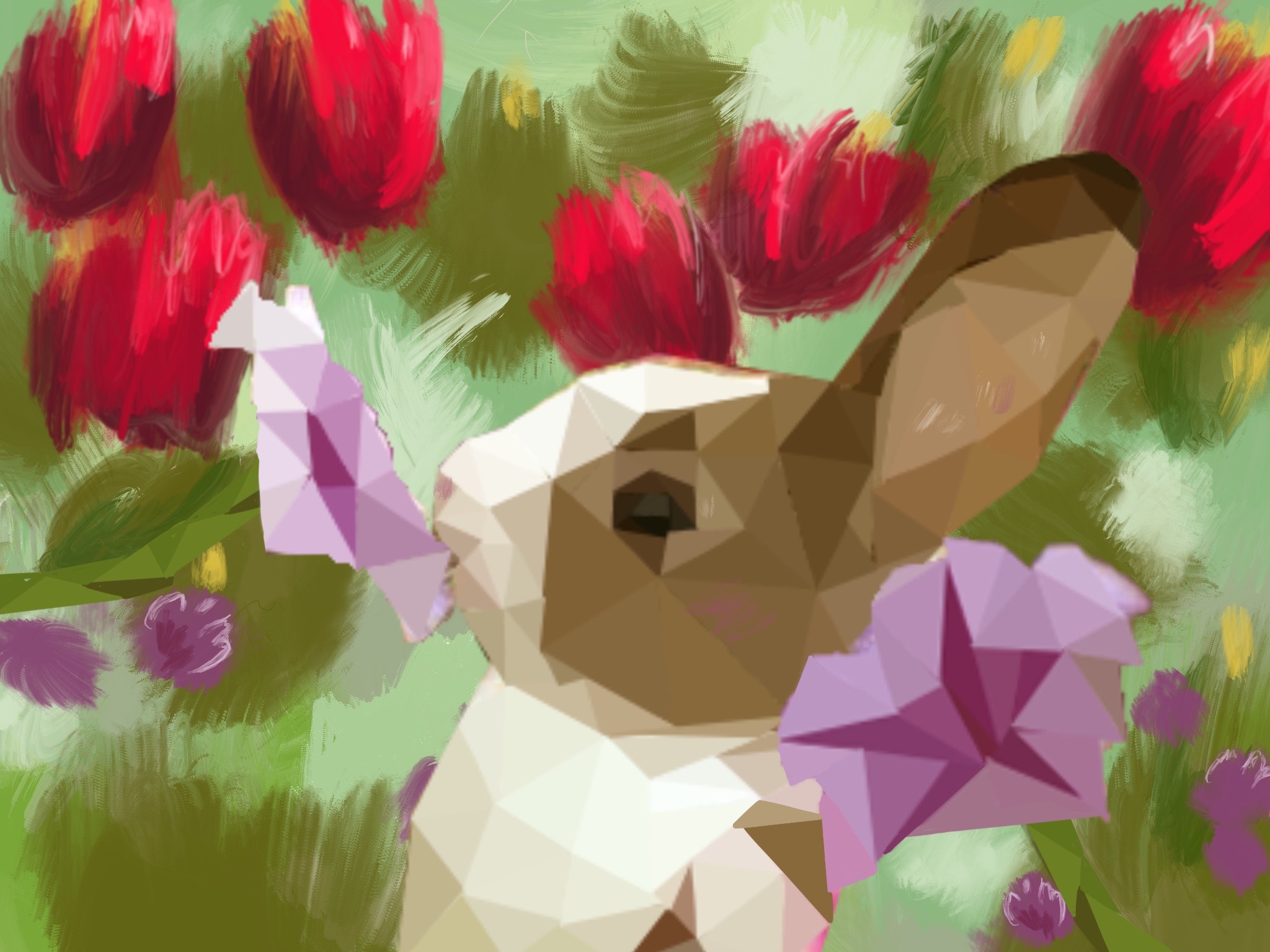

This is the point where you place the North Star that guides your game.
Pre-production is the first stage in a game’s development process. Characterized by endless questions and infinite possibilities, this is the point in the production lifecycle where you place the North Star that guides your game toward your vision. Pre-production may be daunting initially, but it becomes more manageable when you work through it one step at a time. This article outlines the critical steps of the pre-production phase in no particular order. Please feel free to jump around and iterate as needed—you may realize that a once brilliant idea may no longer fit the overarching theme of the game when you start filling in more detail.
Land on a Central Theme
Whether a team is small and independent or large and well-funded, establishing a central theme to build the game upon is a crucial step of pre-production. Taking into consideration that everyone has a distinct creative process, our team at Amebous Labs went about this step in multiple ways:
- We met collectively to throw out ideas and complete prompts that tested our imaginations, forcing us to think outside the box.
- We also had solo brainstorming sessions and shared our concepts with the team via two-minute pitch presentations. With so many great ideas to work with, we picked two of our favorites and split into teams to get started on the details. After a week of fleshing out these concepts, both groups presented their pitches. Together, we discussed what would work for VR and identified potential threats to the development process.
- We sought out and incorporated outside perspectives to land on our idea for Loam.
While this process will not be ideal for every team, it proved to be an uncomplicated way for us to consider everyone’s ideas. No matter how you decide to determine your theme, be sure to look at the whole picture by asking questions like: What artistic or development challenges do you anticipate encountering? Can you overcome these challenges with the resources available to you? What does the competitive landscape look like? How can I monetize the game? Is there a gap in the market for a game like this one?
No other phase of game development allows for as much creative freedom as pre-production does. Fully formed ideas are not required at this point because there are still so many unknowns. So rather than focusing on the details, have fun brainstorming some themes, see which interests you the most, and then pick a viable option.
Define Your Target Audience
You cannot please everyone. I learned early on that everyone has a different set of preferences in what they look for from gaming experiences. What one person finds enjoyable, others find unenjoyable. Even within our team, each member has varying interests and preferences. This means there is no right or wrong answer to game design. Instead, define your target audience and design your game with them in mind.
With that said, a game’s playerbase is not limited to its user personas. Someone who does not identify with your outlined user personas may play and enjoy your game just as much as someone who fits that demographic perfectly. Still, when we need to make decisions, we must first think about our target audience and ask ourselves if it aligns with their desires and motivations.
Check out this recent Under the Microscope article to discover how we created user personas for Loam.
Do Your Research!
Play games—lots of them. And as you play them, replace your mindset and biases with those of your target audience. What about this game resonates most with its superfans? Analyze every element that comprises the gameplay and consider which details attracted its devoted players.
Loam’s pre-production phase took place during a time when the team was working 100% remotely. Using Discord, we played a new game together each week in a series of aptly named “Game of the Week” meetings. Different members of our team suggested titles like Stardew Valley, Animal Crossing, Minecraft, Among Us, and Cook-out. The member that chose each week’s game would become the leader for that week’s play session, identifying their favorite parts of the game plus any potentially useful mechanics to keep in mind when making our own game. Not every game we played was within the same genre as ours, but we focused on specific aspects that we could use as prompts to start a conversation.
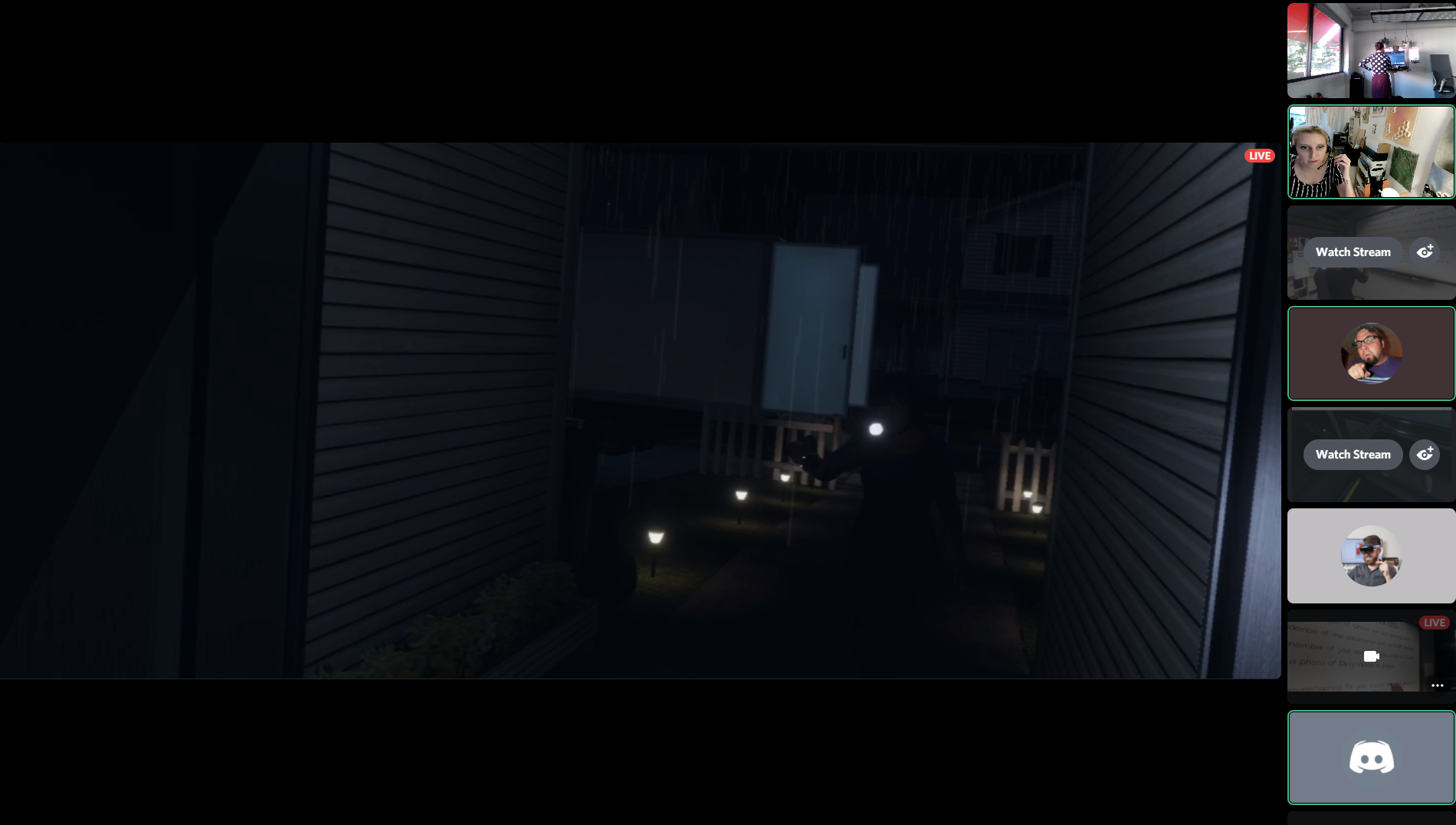
The team playing Phasmophobia during a special Halloween edition of Game of the Week.
If you are limited in resources or do not have access to certain games, then you’ll need to get creative. Find people on Twitch that stream relevant games and listen to what they have to say. Here, you will learn about your target audience’s motivations and where their frustrations lie within the current gaming landscape. If for no other reason, pre-production is underrated because its methods of data collection are so fun!
Figure Out How You Can Do It Better
Finding inspiration by observing how other games handle certain situations will save you time and frustration during development but avoid doing things the same way! Figure out how you can adapt and customize your findings to fit your game. Countless games are hitting the market each year, so yours needs to stand out. To do this, you must determine what your unique selling proposition will be. There must be something that makes your game more appealing to your target audience than the other games available today.
By no means should you have all the answers during pre-production, but you should start thinking about what you can do to make your game different. We accomplished most of our theorizing about Loam’s in-game mechanics and features during this stage of the development process. I suggest you consider prototyping these theories as needed and consider using temporary assets to speed up the process. We relied on our imagination and used cubes and cylinders as objects to determine whether or not the movements in VR felt natural and enjoyable.
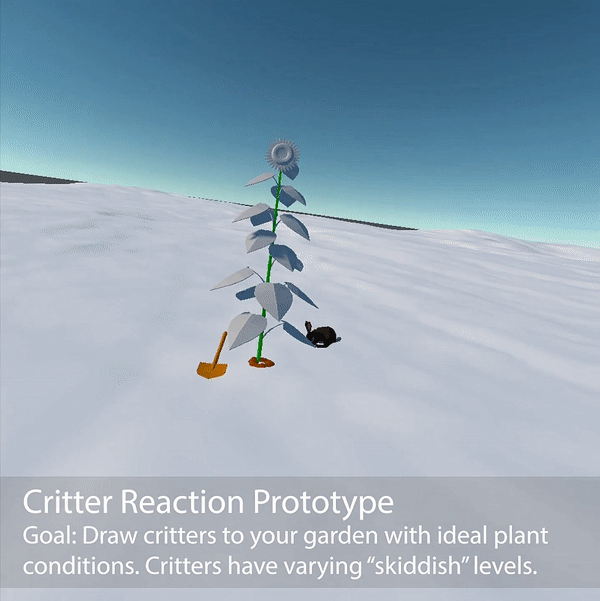
Early game footage featuring temporary assets.
Bring the Vision Together
The Game Design Document (GDD) and concept art complement each other well to help your team fully realize their vision. From this point on, any game elements you have decided upon belong in the GDD. Our team uses Confluence to document EVERYTHING in our game. It is a living, constantly changing document that we use as our source of truth. Any team member can log into Confluence and easily find Loam’s latest updates, notes, and decisions, but keeping it organized is a team effort. Here, pre-production planning comes in clutch. Create your hierarchy and organizational strategy during pre-production to ensure that everyone who touches the document keeps within those confides. It was intimidating to start the GDD, but it was easy to build upon once we had the framework.
We started our GDD as a shared Word doc. Ultimately, this did not satisfy our needs, so we moved it to Confluence. If you find out a process or software does not work well for your team, change it! Confluence’s features were well worth the time it took to migrate the information there from Word. Partway through the pre-production process, we also switched our project management software to Jira. It works in tandem with Confluence, making it super convenient to connect tasks and reference design documentation. Be open to reevaluating how you are staying organized as a team because what you needed at the beginning stages may not cut it a few months into development.
Concept art is the second major piece of the puzzle when creating the vision for the game. Concept art isn’t used in the game as is; instead, it guides a game’s style throughout development. Our Art Director, Shelby, drew maps and sketched out sample game objects that helped define what the world of Loam looks like today. We had visual inspiration to reference, but our goal was to create something unlike anything we have seen before.
Click here to dive deeper into how our art team created the look of Loam.
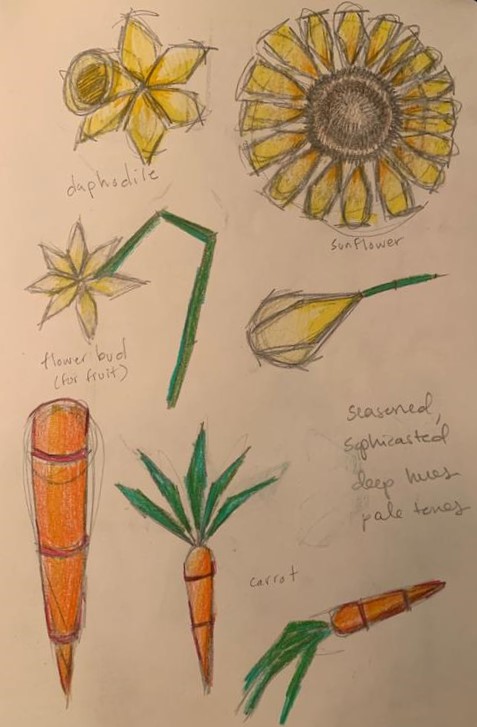
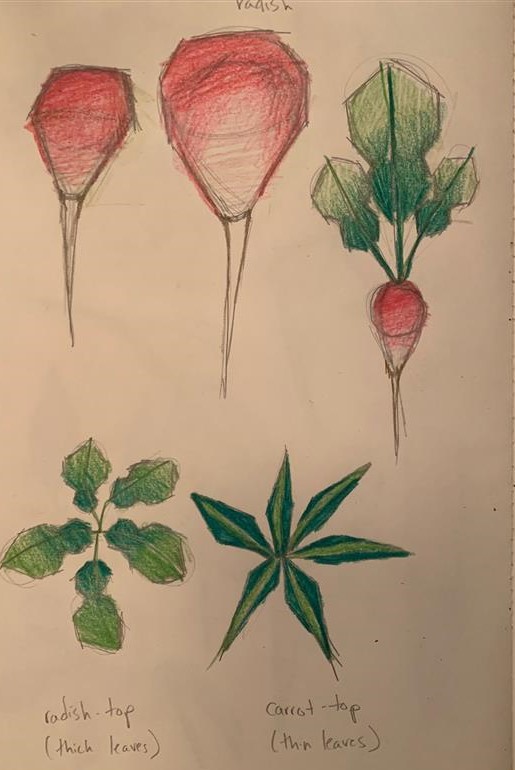

The concept art for Loam’s carrots, radishes, and leaves.
Logistics
The last part of pre-production that I’ll mention is logistics. By starting here, you may find your team better equipped to make decisions during other stages of pre-production. Whether or not you choose to begin pre-production with logistics, you should remember to consider the following points:
- Prioritize your must-haves. You will have to make compromises throughout the development process. Identify your non-negotiables early on to ensure you don’t lose focus.
- Plan your resources. If you are running a team, you should plan when people are available to work on the game.
- Budget your finances with your timeline in mind. Make sure you have enough funds to last through the duration of development with some left over to market the game. As fun as creating a game can be, you likely want people to play it. Keep that in mind when planning out your schedule and budget.
Regardless of the amount of planning you do, things will always change. We have learned an exorbitant amount about developing for the Oculus Quest platform over the past year as we try to push the boundaries of the headset’s capabilities. The platform is continuously evolving, forcing us to reevaluate possibilities at every turn.
Pre-production is underrated because it combines creative freedom and imaginative thinking with careful (but fun!) research and logistical planning. It provides a vital window for your team to hone in on the direction you’d like to take your game.

Written by Amy Stout
VR AS A TOOL FOR SOCIAL CHANGE

Written by Linda Zhang
Virtual reality is an amazing tool for creating immersive experiences. While traditional 2D media provides a window through which we can peek into a world that otherwise can’t be seen, a VR headset “puts” us there by supplying an entire suite of mesmerizing 3D visuals, audio, and haptic stimulation. Together, these attributes enable VR game designers to design breathtaking games and create life-like simulations. While big-budget games may garner all the attention, VR can be an indispensable tool for achieving positive social change. In this blog entry, I would like to share how virtual reality is being used or could be used for social good to inspire the production of meaningful VR experiences beyond just games and entertainment.
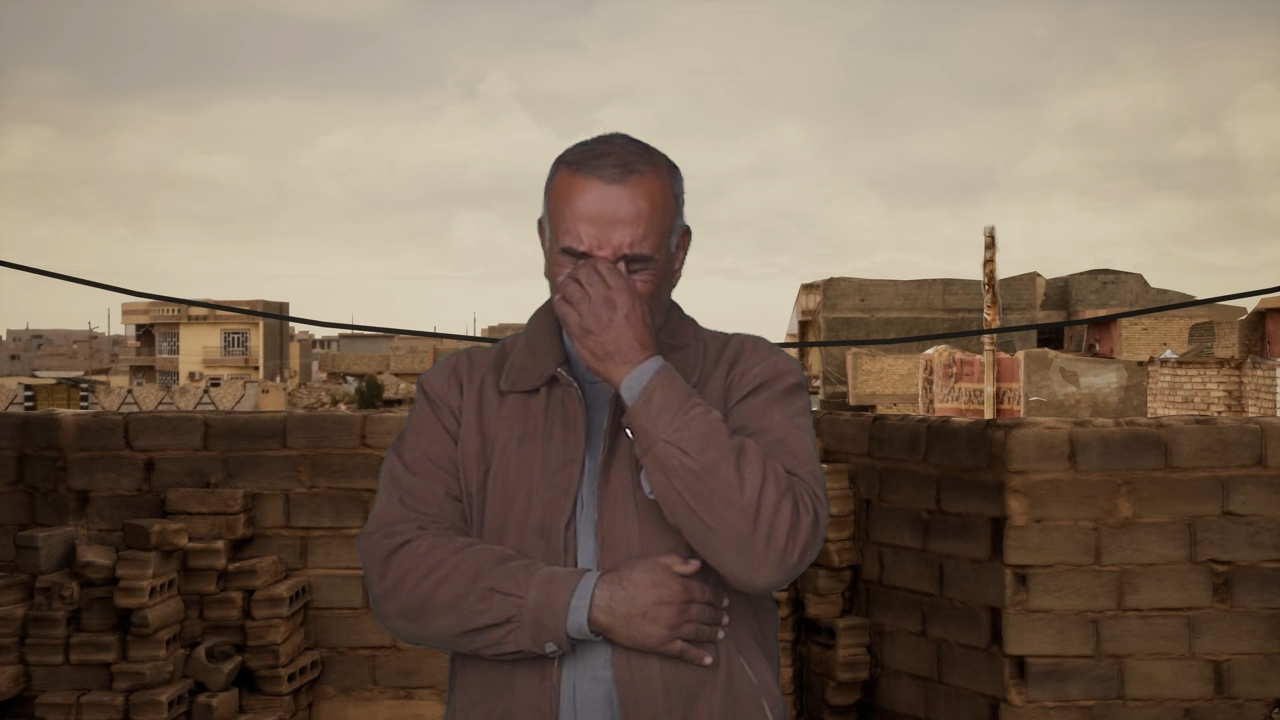

As a powerful tool for empathy, VR can be a valuable medium for compelling storytelling.
Developers can design virtual reality to create training scenarios that allow users to test or develop skills, such as public speaking, before applying them within physical space. For those who experience severe anxiety standing before a room full of people, we can create a tailored VR experience complete with virtual characters looking at the player or utilize a 360-degree video recording of actual people seated in a lecture hall. We could even program the audience to occasionally interrupt the user’s speech with questions to better prepare users for situations where they lose their trains of thought.
VR is also helpful in safely simulating stressful accidents or dangerous scenarios. Allowing users to adequately prepare for these situations reduces the likelihood of panic or chaos should these dangers ever arise in physical space. This ideology is commonplace within the field of VR training.
Some VR experiences function to help people overcome PTSD or various phobias. Psychological studies have shown that exposure therapy is the most effective treatment for phobias; VR can be a powerful tool throughout this process because of its ability to provide a safe environment where the fears can be slowly introduced.
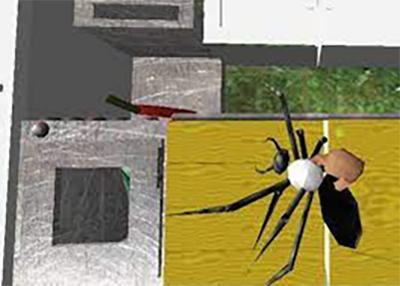

VR Therapy for Spider Phobia created by HITLab, University of Washington
A well-designed VR experience brings a state of presence to the user that can be leveraged as a powerful tool for users to empathize with communities that they may never meet or relate to in physical space.
In a VR demo created by the Georgia Tech School of Interactive Computing, the user operates a wheelchair to maneuver through a virtual space decorated with stairs and ramps. The demo enables players to empathize with wheelchair users and appreciate the accessibility services that ableists often take for granted. Ultimately, experiences like this may lead to greater advocation for accessibility services in physical spaces.
First Impressions is a VR experience that depicts how babies view the world throughout their first 6 months. Beginning with blurry, black and white vision that gradually grows into the colorful, lively world we recognize today as adults, this experience helps us to understand the limited sensory aptitude of babies. Maybe the next time you see a baby crying, you won’t be as annoyed!
Other VR experiences like Anne Frank House VR and Home After War, in which refugees return to their homes under Islamic State (IS) control. These experiences help users empathize with individuals who’ve experienced war at home by placing users in the shoes of real people to empathize with their situations.

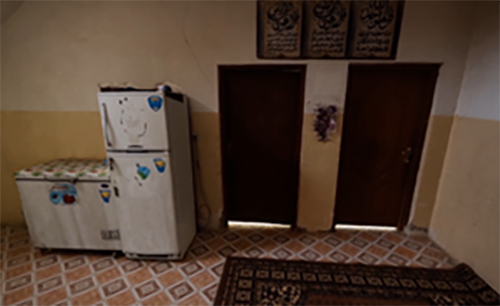
As a powerful tool for empathy, VR can undoubtedly be a valuable medium for compelling storytelling. Development in Gardening (DIG), a non-profit organization devoted to improving the nutrition and livelihoods of vulnerable communities, created a 360-degree film entitled “Growing New Roots” that documented “nutritionally vulnerable communities throughout sub-Saharan Africa.” Produced by Dana Xavier Dojnik, the film’s use of 360-degree cameras provides an authentic view of their cultures and lifestyles. When I watched the movie, it felt like I was there, standing alongside the people in Uganda doing their daily activities.

Written by Linda Zhang
LESSONS LEARNED AS A FIRST-TIME GAME PRODUCER (SO FAR…)

Written by Annie Eaton
I have been producing virtual and augmented reality experiences for clients for nearly seven years now. When we decided we wanted to launch a game studio, I knew it was going to be hard work, but with a solid track record in immersive technology production, I did not anticipate some of the challenges we have encountered along the way. Our first game is still a while from being fully released; however, I thought it was a good time to do a check-in and share some of my learnings with other first-time game producers – especially ones who are doing things independently.


By learning more about each other and our hidden strengths, it’s made us stronger as a team.
Plan, plan and plan some more.
The first thing I wish we had done was to start with a more defined plan. We do this for our clients, so why wouldn’t we do this for ourselves? I wanted to start the project with prototyping and creative freedom since we were in the middle of a pandemic, and it was good for morale. However, by not having a strong plan, in the beginning, we ended up spending too much time spinning our wheels and didn’t have a long-term vision other than a “gardening game.” Once we started designing and documenting before development, things started to run more smoothly and at a quicker pace.

The whiteboard after our first, and only, in-person meeting about the game. Nearly 100% of the game development has been done remotely.
Your timeline will be pushed back.
Our original launch date, looking back on it, was highly unrealistic. We were ambitious and excited, but due to the type of game we are producing (garden simulation), there were many elements that took more time than originally anticipated. We also allowed (controlled) scope creep to occur when we found something that HAD to be in the game. The team has gotten better at recognizing unnecessary launch features and understanding why we cannot add them in at this time. We also realized that we only have one chance to make a first impression as a game studio, and we would rather launch the right game at a later date than the wrong game early.
Remember your game is a business.
This is probably the #1 thing I need to remember when judgment gets clouded. Indie game development is full of passion, excitement, and personal opinions. But to sustain a studio, salaries, benefits, software licenses, hardware, etc., the business side of the game must take high priority. Just like any other project, the ultimate decision comes down to time, budget, effort, and quality. While that may knock the wind out of some peoples’ sails, it brings me comfort. It is a guiding force that helps me maintain focus and drive. If we execute this well as a business, we get to do more of it which is worth it (even when I have to be the bad guy).
Know everyone’s strengths.
I know my team well. Most of us have been together for years and have encountered quite a bit together, but I learned so much more about everyone throughout this process. In doing an independent internal production, it allowed us to branch out of our typical roles and take on new ones in a true all hands (and many hats) on deck situation. For example, I am the executive producer, but I am also a composer and have been using those skills to compose the background music for the game. A couple of people were required to step up into leadership positions, and those are strengths that were previously held inside as well. Others who were in development and marketing have stepped up to manage playtesting processes and sessions. Instead of just assigning roles, I have learned to ask if I have an opportunity if anyone is interested. By learning more about each other and our hidden strengths, it’s made us stronger as a team.
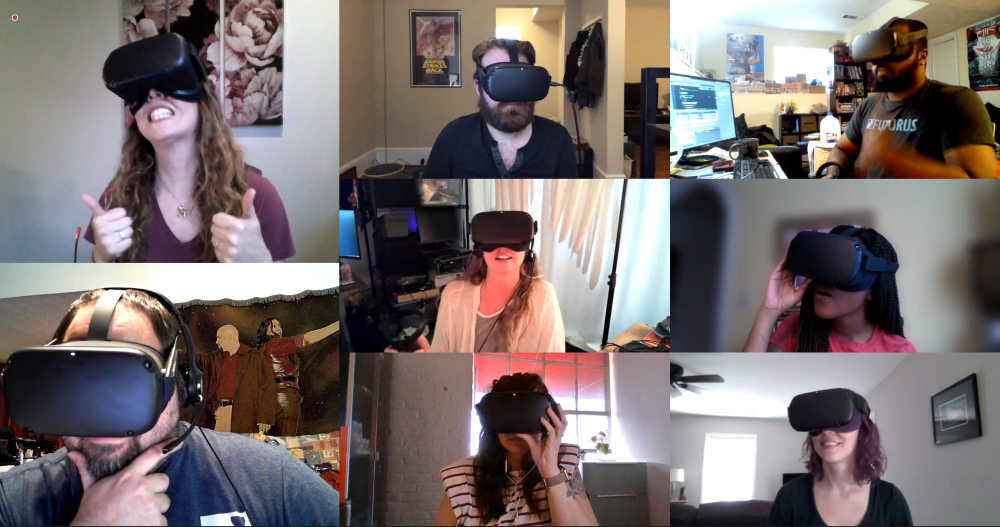
Viewing game scenes at the same time in VR.
Have a long-term goal, and then add more.
When we started development, our long-term goal was to release a game. Plain and simple, right? Wrong! The goalposts kept moving, sometimes narrowing and sometimes expanding, but that is 100% normal. We now have a series of goals that go from that first-time player experience to the third game update. By verbalizing our goals and sharing them with the team, we have more unity (hehe, no pun intended). Everyone shares the vision, has the power to contribute to the vision, and we work together to make it happen. I am happy our goalposts keep moving and evolving, but we also need to remember to look back on all that we have accomplished. And that brings me to my last lesson…

One of those pesky (but funny) bugs that we have since crushed.
Celebrate the wins and recognize progress.
This is something that we all have challenges with. We celebrate wins when they are obvious – someone completes a major task or crushes a pesky bug. But oftentimes, we forget all of the little things that add up over time. For years now, I have been doing a “list of good things” once per week where we write down at least 3 good things that happened. If I ever need a reminder of how far we have come, I look back on that list (which now goes back about three years) and get a jolt of energy. I highly recommend reminding yourself of all you have accomplished as well as verbalizing that to your team. It can go a long way and shows you’re paying attention.
This is just a shortlist of all I have learned so far, but I hope to publish an update upon the launch of Loam. Thank you all for your support in this process – it is not by any means easy, but it is one of the most rewarding professional endeavors I have tackled.
